
Amadita
Driving digital transformation in the healthcare industry

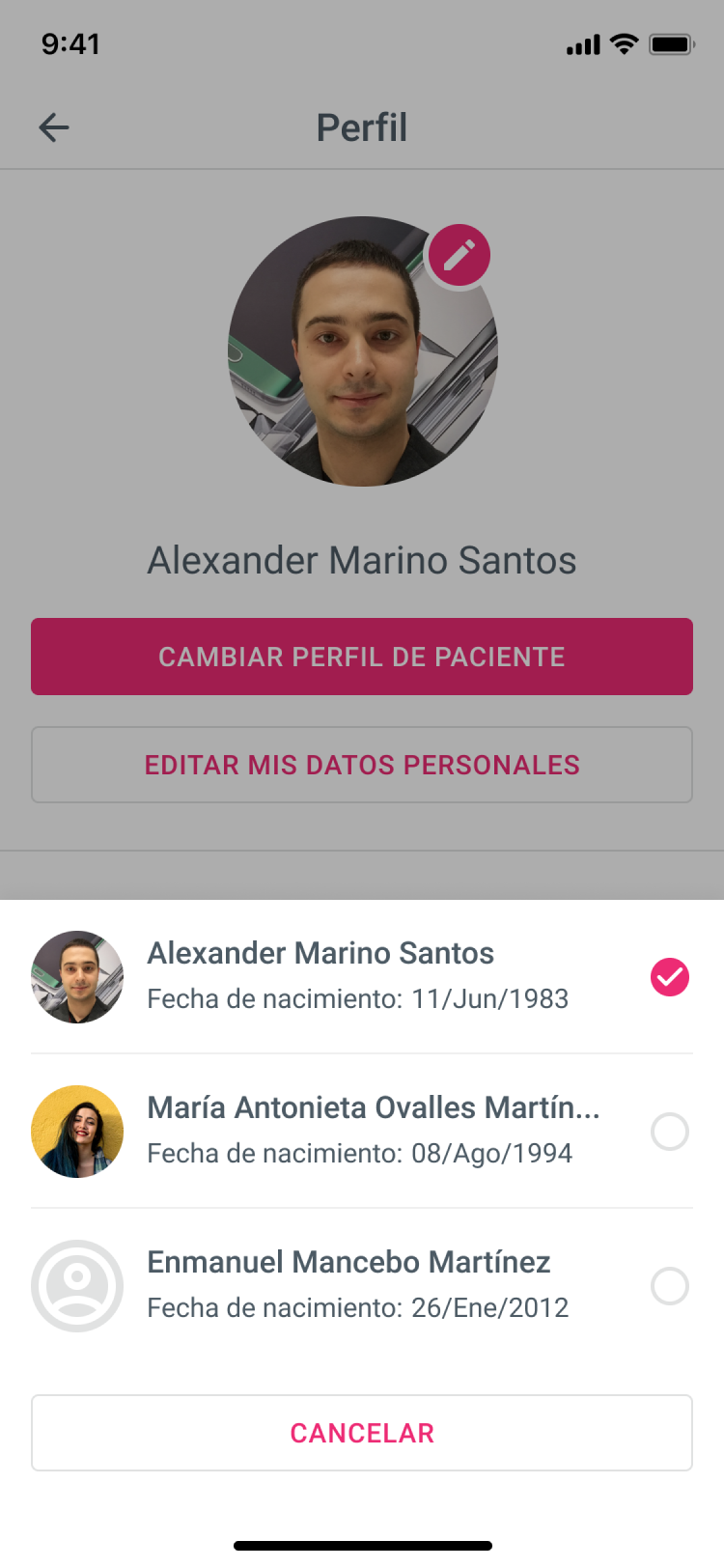
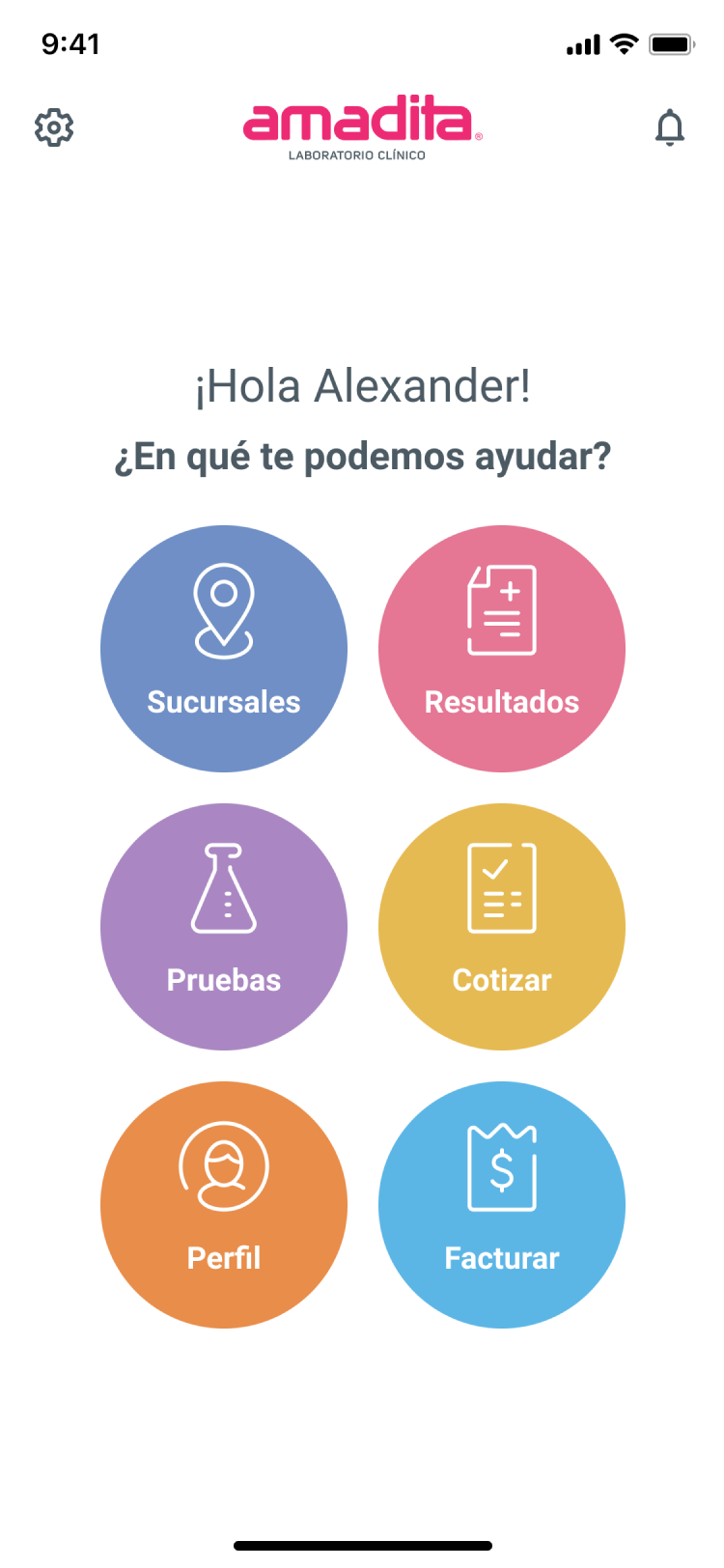

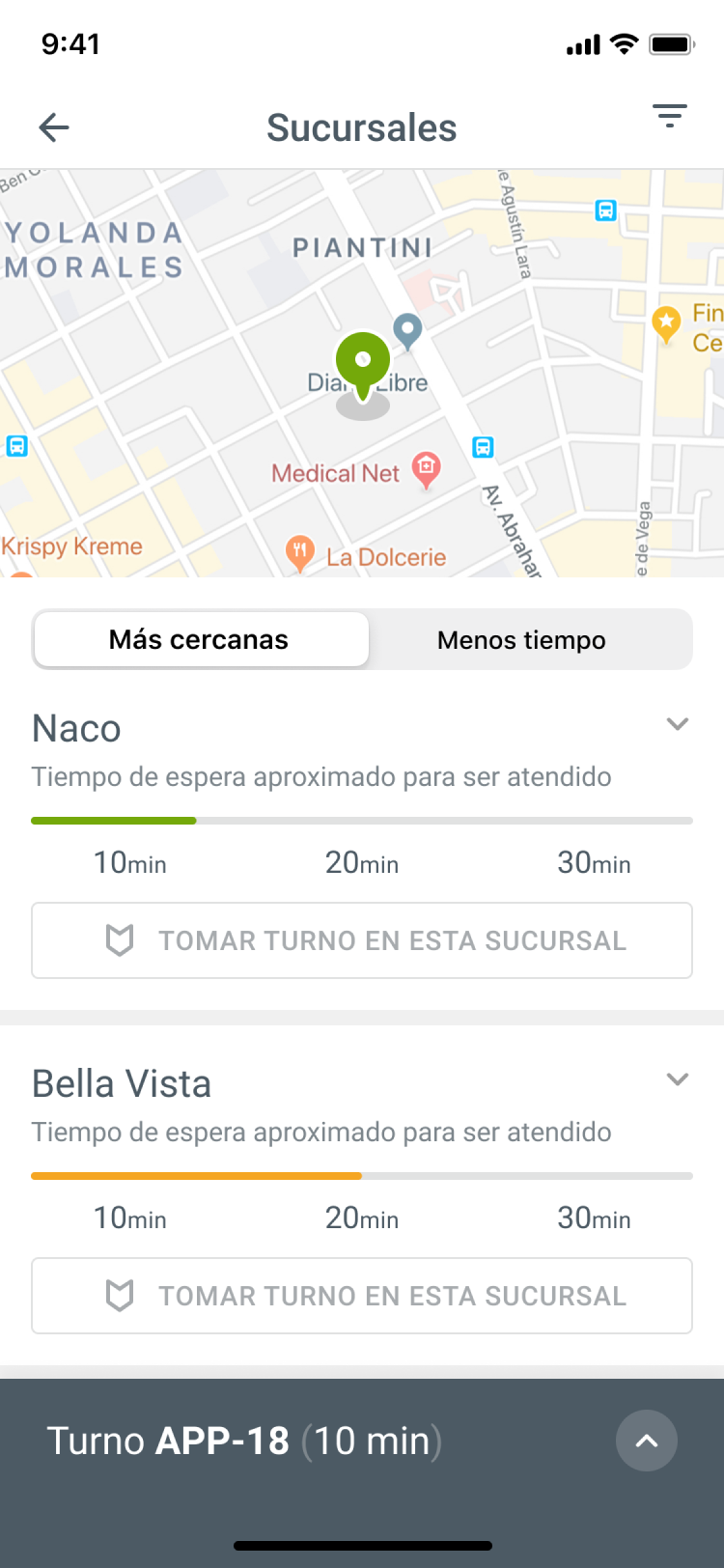

The Situation
Amadita’s Context
Vision
Improve patient experience by building the most patient-centric-data-driven lab experience on the planet while at the same time creating alternate channels, opportunities, and spinoffs.
Why
Amadita believes that taking care of a patient is an act of love.
Goals
- Build a tech-enabled innovation culture in the organization that helps create the foundation for the next 60 years
- Reduce wait time due to high traffic and all the preprocessing required to get blood drawn.
- Establish the groundwork to drive data-driven decisions
- Build required technology infrastructure to be able to participate as a primary stakeholder in the Dominican Republic health sector transformation
Vision
Improve patient experience by building the most patient-centric-data-driven lab experience on the planet while at the same time creating alternate channels, opportunities, and spinoffs.
Goals
- Build a tech-enabled innovation culture in the organization that helps create the foundation for the next 60 years
- Reduce wait time due to high traffic and all the preprocessing required to get blood drawn.
- Establish the groundwork to drive data-driven decisions
- Build required technology infrastructure to be able to participate as a primary stakeholder in the Dominican Republic health sector transformation
Why
Amadita believes that taking care of a patient is an act of love.
The GBH Difference
Bring the startup mindset to enterprise
Experimentation, creating value in small chunks, and establishing multiplinary teams are some of the elements that are important to deliver tech-enabled innovation. GBH has experience collaborating with startups in different stages as well as large enterprise businesses in regulated sectors; we know how to navigate both cultures in order to create the perfectly blended environment to achieve ambitious goals.
From board-level strategy sessions to day-to-day execution
We understand business strategy deeply and are passionate about helping businesses realize their vision. That’s the environment we love working passionately for — a why we believe in. Because at GBH, we measure our success by the impact our work.
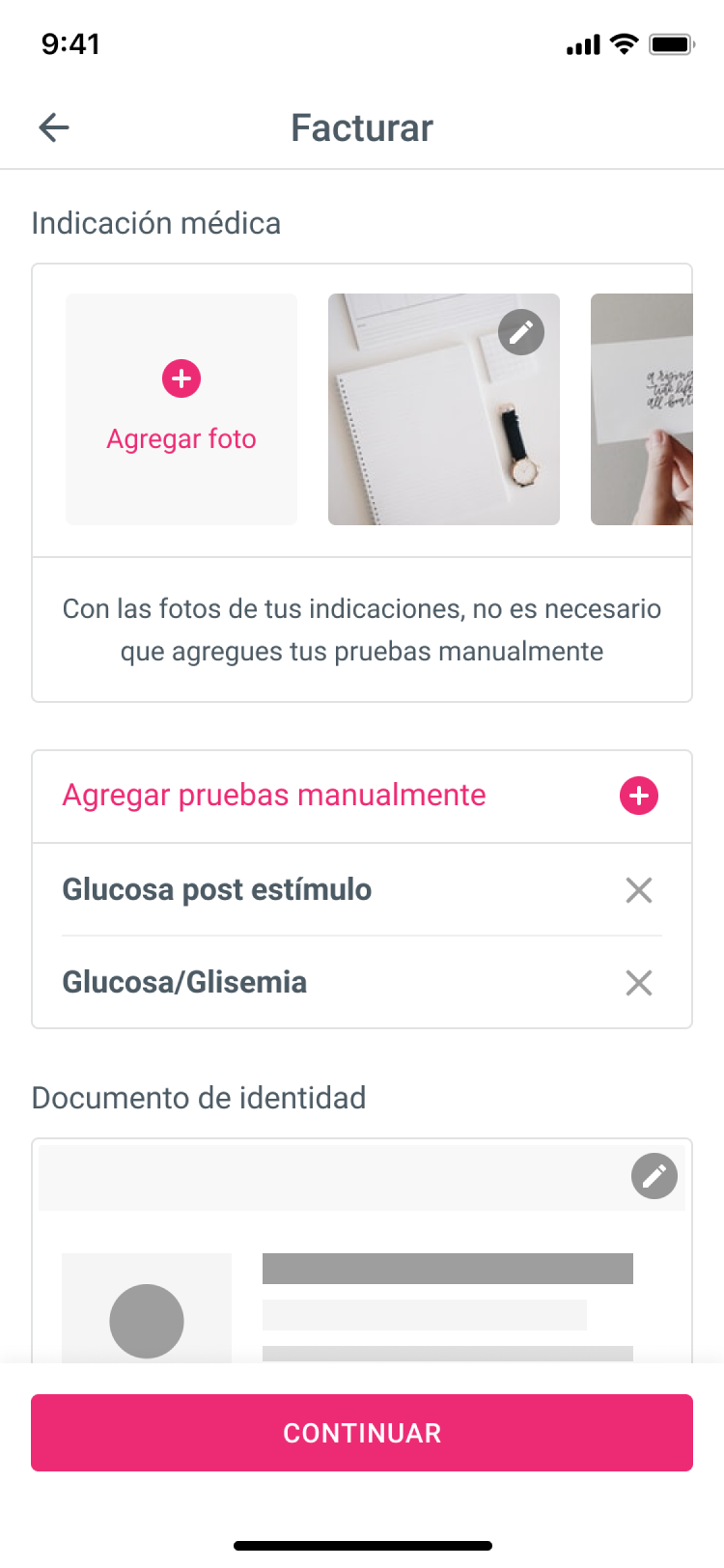
What We Did
Evaluate the landscape
Get acquainted with Amadita’s why and the strategic plan. We met with Amadita’s board and executives to understand what the main strategic goals were and to understand the competitive landscape, main clients, strengths, weaknesses, opportunities, and threats.
Determine a short term plan initiatives
Using the strategic information we collected, we then looked to identify how these goals are reflected in each area of the organization from logistics and operations to the commercial department. Our goal was to find a list of issues that were blocking these departments from achieving their respective goals.
Prioritize and roadmap
We helped Amadita’s executive team prioritize all initiatives by mapping the product initiatives on two axes: Client value and Business value. Once that was completed, we determined how those products would be released over time given the available budget.
Retain a product and engineering team
We partner with Amadita powering them with a multidisciplinary team across many transformation functions: product, engineering, delivery, and user experience.
Build the product mindset
One important aspect of a real transformation process is to shift from a project to a product mindset. Projects, by definition, are time bound and serve a finite purpose; which is the opposite of how businesses operate. On the other hand, products provide a framework of evaluation and a constant look at mechanisms, through feature development, that provide constant value for the organization. We helped Amadita understand this concept as well as to setup a cohesive multidisciplinary team for the strategic and tactical purposes of each product.
Internal KPIs
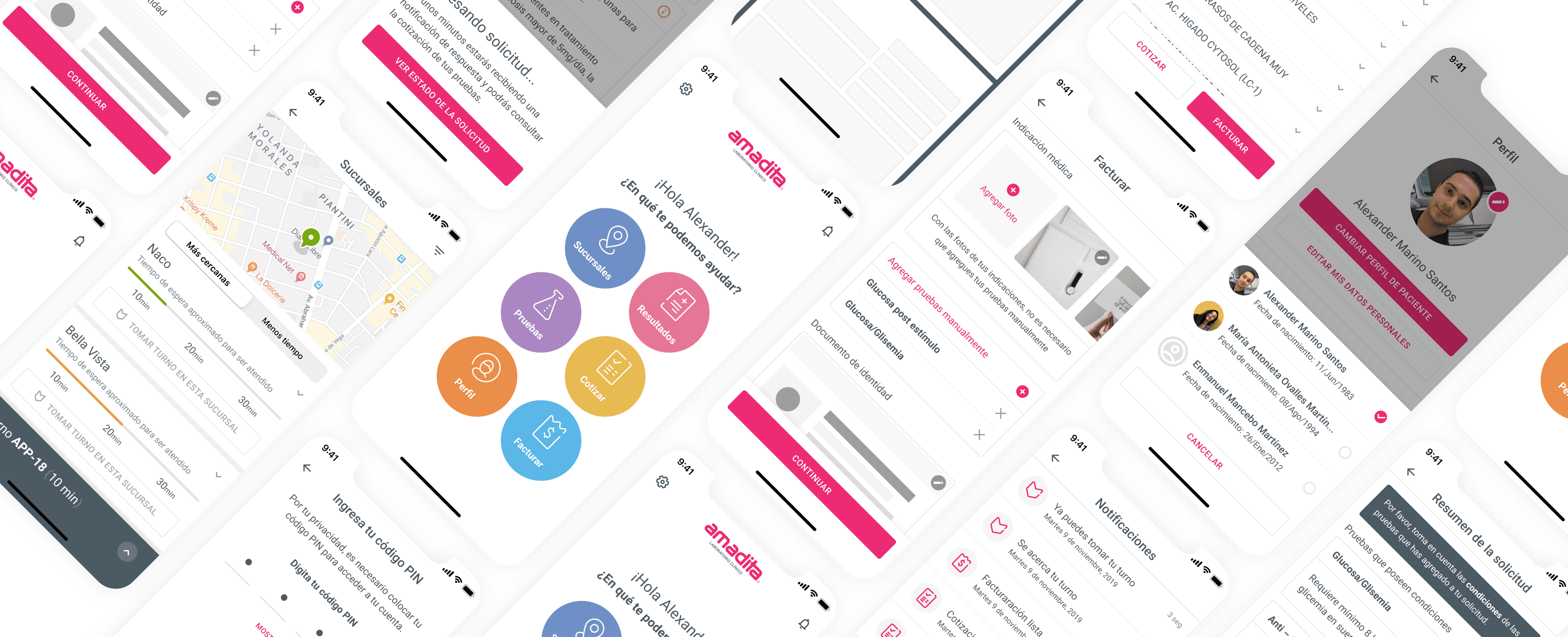
The Result
The first of our product launches was oriented to improving the patient experience, as well as creating a digital channel through a new version of Amadita’s mobile application: Amadita App 2.0.
Amadita App 2.0 improves patient experience by moving most of the time intensive pre-approval process for the tests to the comfort of people’s homes. Today, Amadita’s patients can do the following:
- Request insurance pre-approval for their lab tests, pay for the copay online, and just show up to their most convenient branch after taking a spot in the queue online;
- Select their most convenient branch to draw blood brom based on actual in-branch-queue size so they go to the branches with more availability;
- Have in-app text conversations with Amadita’s team to go over any other need
In summary, Amadita has reduced patient wait time by at least 50% and has generated around 300 transactions a month, growing at a rate of 20% per month.
From the business side, Amadita can use the data generated by this product to help operations, logistics, and commercial teams drive innovative strategies to further improve patient experience and ROI.
Objective and Key Results (OKRs)
With OKRs we measure how we are performing relative to the desired quarterly objectives for any aspect of the products we manage. We define objectives that are hard and inspiring and then aggressively pursue them. Moreover, we measure health metrics on how we consistently deliver tremendous value of the products.
Commitment
In agile projects, daily standups tend to become a place where commitments are made but rarely remembered the next day. We track compromises our team makes which has proven as a great way to calibrate estimation and utilization.
Quality
We believe that what you don’t measure you can’t change. For all our teams, as part of the workflow execution, we collect data about engineering and quality assurance performance. This translates to tracking the number of times tickets are returned at the QA stage and the User Acceptance Testing (UAT) stage, which in turn allows us to flag when occurrences outside the norm happen